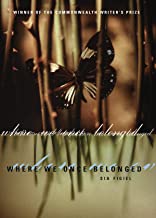Tribes by David Lammy promises much, delivers something, but ultimately fails to convince. Its problem lies in the very nature of its vision, not that this is wrong, misguided or anything less than laudable. This ultimate failure to convince, in fact, derives from the overall vision‘s inability to confront the very issues that the author identifies at the start.
David Lammy is a British politician, currently a member of Labour’s Shadow Cabinet. In Tribes he attempts to evaluate the political landscape, beginning with a theoretical analysis of why class and other grander identities have become fragmented into what might seem to be smaller, interest-led groupings that he calls ‘tribes’. Many readers might expect this analysis to be developed, but instead the author pursues a personal reflection on some of the ideas raised. And, as the book progresses, the context becomes more personal still, before a final section attempts its rational, credible and, given what preceded, impossible finale. The approach renders the book very readable, but less than satisfying after its promise of theoretical discussion.
The author is a remarkable man. He was born to a Guyanese immigrant family in north London’s Tottenham, brought up by a single mother and then attended the cathedral choir school in Peterborough. London University preceded Harvard Law School, where he became the first black British graduate. In Silicon Valley he became a lawyer and then was elected as a Member of Parliament on behalf of the Labour Party. And then he was a government minister. These are just a few of the facts of this brilliant man’s life – thus far! His wife is white and his children are mixed race, whatever that means, since we are all mixed race, if we are human.
But in a quest for identity of the type that seems to obsess modern people, David Lammy sought out a DNA analysis. The results suggested a mix of origins, one of which linked to the Tuareg of the west African Sahel. The author spends much time and resources researching this link and then, as far as possible, experiencing it at first hand. Though ultimately this association is revealed as tenuous at best, perhaps even illusory, the author’s willingness and enthusiasm to pursue it illustrates a point he makes early on in the book, that identity nowadays seems more strongly felt on a personal rather than group basis. Except, of course, where the group has the ability to bolster and confirm the personal.
David Lammy introduces Maffesoli’s concept of neo-tribes, communities of feeling, to identify a contemporary trend of seeing one’s own personal identity purely in terms of a group identity. Thus, rational approaches to certain issues which, by their nature, are universal, become devalued as neo-tribes develop their own internal values and explanations. It is the fact that these are identity-conferring minority positions that provides the focus for the neo-tribe identity. Fragmentation in our social, economic and religious life fosters the replacement of universalism. This is a crucial point.
A few pages on and David Lammy identifies practically how this behaviour, even propensity, has been exploited by the political Right. He cites two successful electoral slogans - “Make America Great Again” and “Take Back Control”, to which might be added “Get Brexit Done” - as examples of labels that brought success to campaigns by exploiting group fears above rational arguments, thus defeating rational analyses that recognized, or at least attempted to recognize, the true complexity of the issues discussed. The slogans denied this complexity and offered an illusion of simple solutions. David Lammy persuasively illustrates how these simple emotive but inaccurate messages prevailed over the complex, unclear, yet accurate counter argument.
Still in the introduction, he quotes a survey that claims almost two thirds of UK voters still believe the oft-falsified claim that the country sends 350 million pounds a week to the European Union. David Lammy follows this by stating that there still exists a group of deluded individuals who think that Arsenal are the best football team in north London. By way of balance, I will remind him that about thirty-five years ago the philosopher AJ Ayer wrote that it ought to be impossible for a logical positivist to support Tottenham Hotspur. Joking aside, the author thus illustrates that once accepted by a neo-tribe, a falsehood can retain its own internal illusion of truth.
But people do support Arsenal and others Tottenham. They can’t both be right if they assert they follow the ‘best’ team. From the internally accepted values from within the group, however, they can both be right. Even a moment after chanting “what a load of rubbish” at their own team, such a tribe would unite if the same sentiment were to be expressed by the opposition. Welcome to the Conservative Party, which is forever internally divided, but externally as united as Stalin’s allies, until purged, then largely silent. And who cares if the message is irrational, impossible, implausible or even irrelevant? The tribe will back it to exclude others. And it works.
There is much in Tribes that it is rational, clearly expressed, credible and heartfelt. It is a superb snapshot of where British politics and society now reside, precariously in opposing camps, ideologically armed, but often not agreeing on a language where debate might happen, where a sensible question is usually answered by an irrelevant, unrelated positive soundbite.
The book’s overarching message, however, is flawed,
since by the end we have returned to the necessity of acknowledging and
recognizing the complexities of real issues. We must trust our rationality and
engage in the politics of discussion and debate. Global problems need global
solutions. Working in isolation will foster failure. Messy international
cooperation and thus, effectively, globalization is the only way out of local
problems. The difficulty with such a laudable, deliverable and sensible
analysis, however, is that it fails, repeatedly, in the face of soundbite
slogans that seek and achieve short-term, but identity-giving non-solutions.
Remember Vote for Victory?













